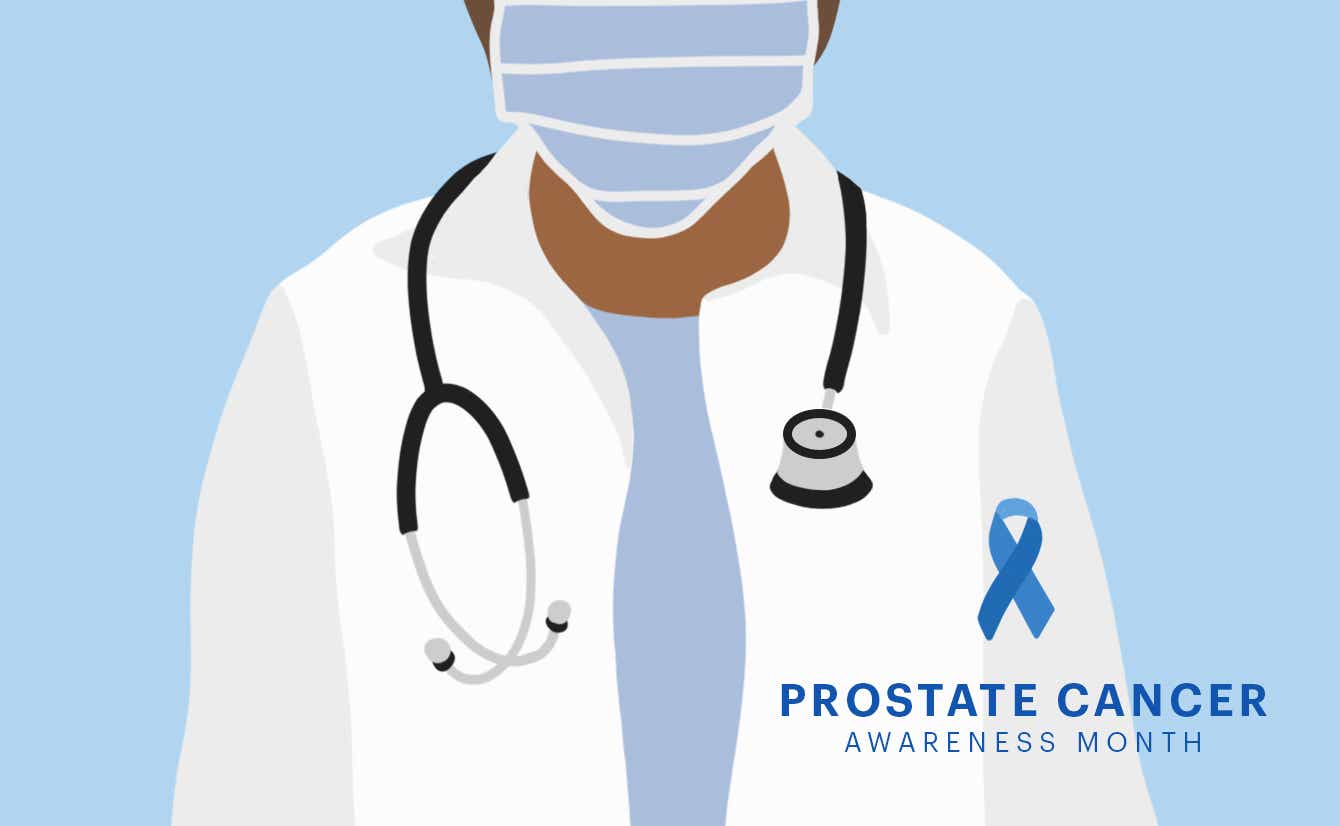Most men are uncomfortable talking about prostate cancer, even though it’s the second most common cancer among American men (after skin cancer). But the silence is starting to break, thanks to public figures like NBC’s TODAY co-host Al Roker and actor Ben Stiller speaking out about their personal experiences with the disease.
Prostate cancer is something men can’t afford to ignore, especially when early detection is possible. This year alone, nearly a quarter million men in the United States will be diagnosed with the disease, and more than 34,000 will die from it. Since September is National Prostate Cancer Awareness Month, now’s the perfect time to share what men need to know about this disease.
What is prostate cancer?
Prostate cancer, which only affects men, is caused when cells begin to grow out of control in the prostate gland located below a man’s bladder. The gland is about the size of a walnut in younger men, though it can get bigger as men grow older.
While hearing a cancer diagnosis can be scary, it’s important to know that most cases of prostate cancer grow slowly and don’t spread beyond the prostate gland. But early detection can still be vital, because some aggressive types of prostate cancer spread quickly. Finding prostate cancer early gives you a better chance for successful treatment — and gives your doctor the chance to monitor your cancer if it’s slower-moving.
Your risk for prostate cancer depends on several factors
Your race and ethnicity plays a part in your risk: When Al Roker shared that he was fighting an aggressive form of prostate cancer that was luckily caught early, it was a powerful reminder that Black men and Caribbean men with African ancestry face a higher risk of both developing prostate cancer and dying from it. In fact, 1 in 7 Black men will be diagnosed during their lifetime, and 1 in 25 will die from the disease.
Age is also a factor in whether a man will develop prostate cancer, especially after age 50. As men age, that risk increases even more, with men over age 65 accounting for about 6 in 10 cases of prostate cancer. (The average age at diagnosis is 66.) Family history matters, too, but it’s not the only thing that counts. If your father or brother has prostate cancer, your risk of developing it more than doubles. But still, most men with prostate cancer have no family history of the disease.
Speak up about your symptoms
Prostate cancer doesn’t usually cause symptoms in its early stages, which is why screening can be vital. If prostate cancer is more advanced, it can cause symptoms that men may feel embarrassed to bring up with loved ones, or even a healthcare provider, including:
- Problems urinating, especially at night
- Blood in urine or semen
- Trouble getting an erection
- Pain in the hips, back, chest, or other areas (from cancer that has spread to bones)
- Weakness or numbness in the legs or feet
- Loss of bladder or bowel control from cancer pressing on the spinal cord
They may not be easy to discuss, but they’re critical to mention to your doctor.
Ask your doctor about screening
Medical opinions differ as to whether screening is necessary, because of the slow-moving nature of prostate cancer and the risk of false-positive results. That’s why you should speak with your doctor about if and when to get screened. The American Cancer Society recommends that men at average risk talk to their doctor about prostate cancer screening at 50, but those with a family history of cancer, or who are of African descent, should start that conversation at 40. If you’re diagnosed with prostate cancer, personalized genomic tests can help you and your healthcare provider make informed treatment decisions. One option is the Oncotype DX Genomic Prostate Score® (GPS™) test, which can help healthcare providers determine the best course of action for men with certain types of prostate cancer that hasn’t spread. Other tests like the Oncotype MAP™ Pan-Cancer Tissue test and the Oncotype DX® AR-V7 Nucleus Detect test can help providers determine next steps for later stages of prostate cancer.
Not all prostate cancers are the same; some men with slow-growing prostate cancer (more than 30 percent of cases) choose active surveillance, which means closely monitoring and testing the patient — but not giving any treatment unless there’s a major change — rather than undergoing immediate surgery or radiation therapy.
Don’t go it alone
Whether you’re getting screened or facing a prostate cancer diagnosis, there’s support out there for you and your loved ones. The side effects of prostate cancer surgery, like impotence or incontinence, can be embarrassing to talk about, so it might be helpful to connect with those who understand what you’re going through. Try these resources:
- ZERO – The End of Prostate Cancer: A national organization dedicated to prostate cancer education, testing, patient support, research, and advocacy that offers comprehensive support for men and families.
- Prostate Cancer Foundation: An international philanthropic organization dedicated to researching and eradicating prostate cancer — it offers guides with information about doctors, treatment, and financing options.
- Us Too: An international advocacy organization that empowers men diagnosed with prostate cancer (and their loved ones) with educational resources and support, helping them make informed decisions on testing, surveillance, treatment options, and side-effect management.
- Al Roker’s message to men about screening: One in a series of video interviews Al Roker recorded with the Memorial Sloan Kettering Cancer Center about prostate cancer screening, surgery and the importance of having an advocate.
Prostate cancer is a tough topic for men, but there is a roadmap to follow. Tell your health care provider about symptoms and discuss what’s right for you when it comes to screening and treatment. If you are diagnosed, remember that you’re not alone — there is strength in numbers if men continue to share their stories.









